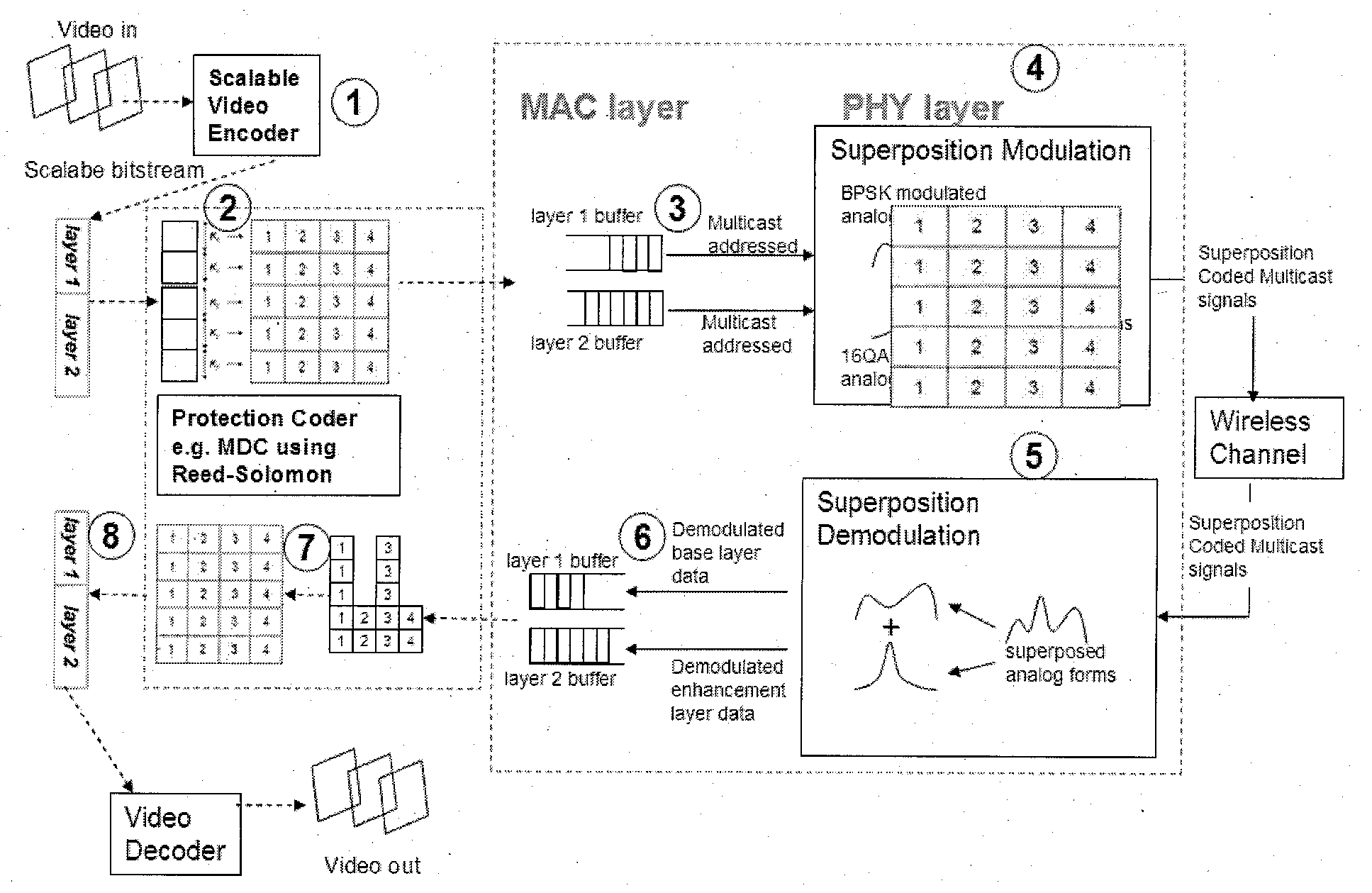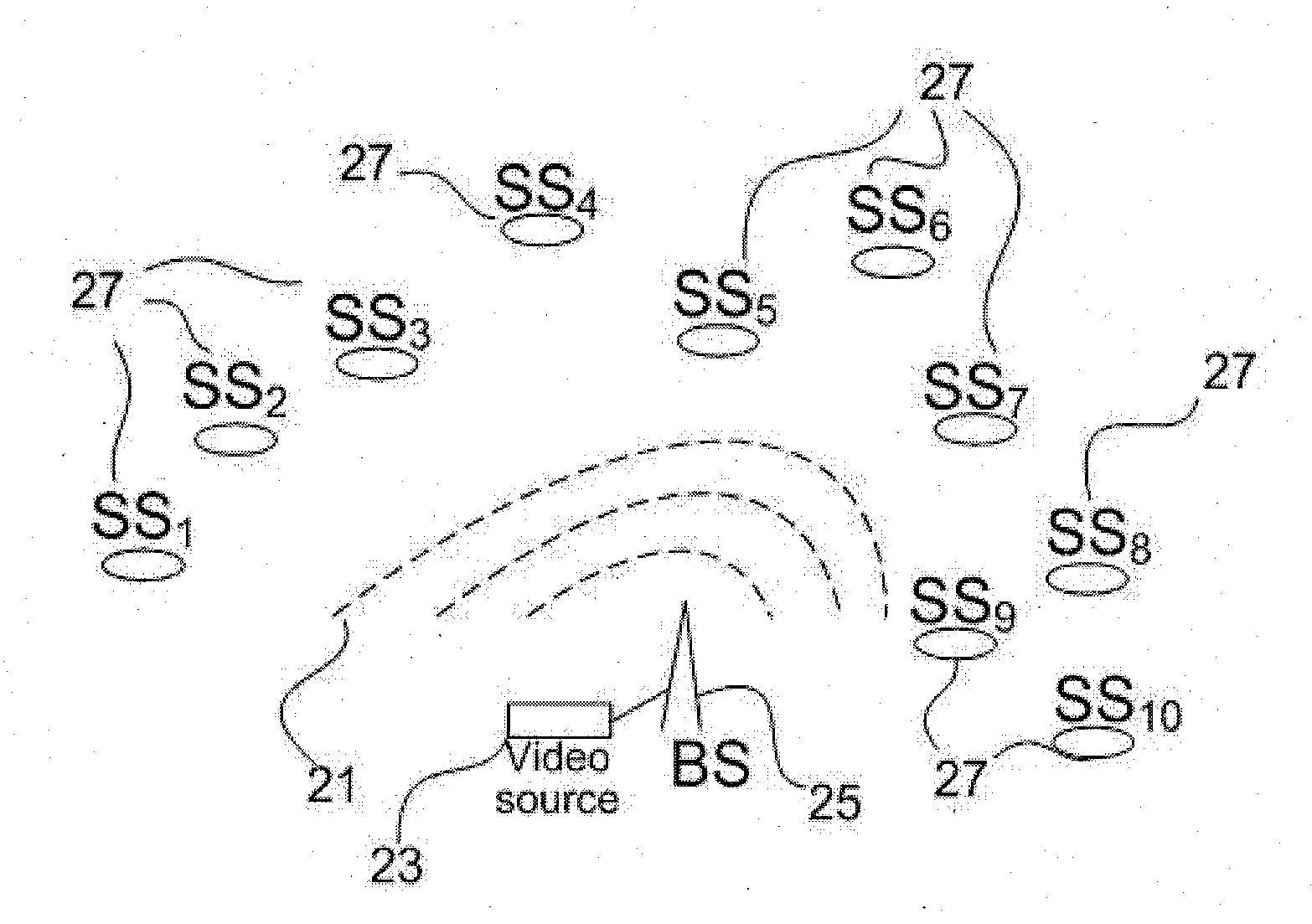A robust system and method for wireless data multicasting using superposition modulation
a wireless data and superposition modulation technology, applied in the field of wireless communication, can solve the problems of channel wastefulness underutilization, loss of certain amounts of data in the signal (especially, ) forever or in error
- Summary
- Abstract
- Description
- Claims
- Application Information
AI Technical Summary
Benefits of technology
Problems solved by technology
Method used
Image
Examples
Embodiment Construction
Overview
[0043]The present invention is operable to increase the capacity and robustness of data multicasting in wireless communication solutions, such as wireless communication network using WIMAX, LTE, any similar or evolving wireless standard, by means of an advanced joint source and channel coding method and system as described below, and variations thereof. An example of application of the present invention is in connection with broadband multimedia services over WIMAX for a certain quality assurance such as IPTV or mobile TV services, Internet-based advertisements or any one-to-many video communications over wireless.
[0044]The present invention is described below by explaining four major aspects thereof. These are described individually with an example of scenario and suggested design parameters for illustration purposes. However, the present invention is not limited to the presented examples and associated parameters, which can be expanded, transformed or induced to be applica...
PUM
 Login to View More
Login to View More Abstract
Description
Claims
Application Information
 Login to View More
Login to View More - R&D
- Intellectual Property
- Life Sciences
- Materials
- Tech Scout
- Unparalleled Data Quality
- Higher Quality Content
- 60% Fewer Hallucinations
Browse by: Latest US Patents, China's latest patents, Technical Efficacy Thesaurus, Application Domain, Technology Topic, Popular Technical Reports.
© 2025 PatSnap. All rights reserved.Legal|Privacy policy|Modern Slavery Act Transparency Statement|Sitemap|About US| Contact US: help@patsnap.com



